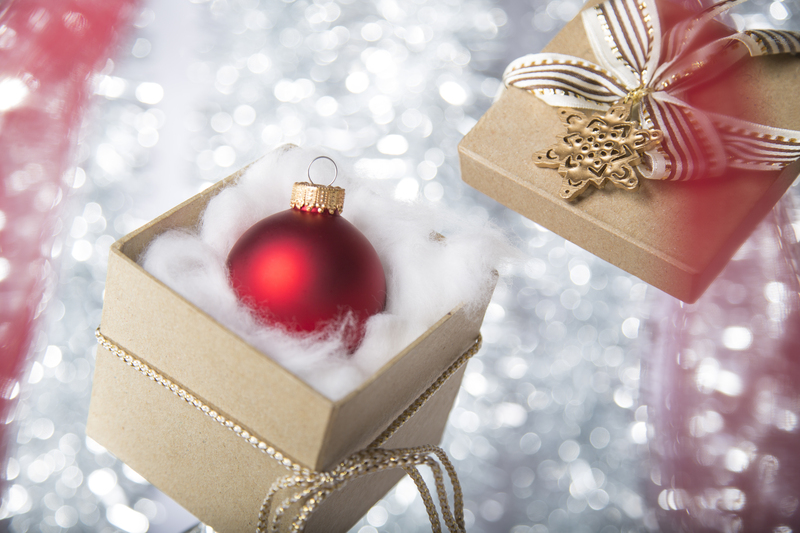The Right Way to Recycle Old and Damaged Cookware
Getting rid of old pots and pans isn't as simple as tossing them in the trash or even your curbside recycling bin. With sustainability and environmental impact in mind, learning the right way to recycle cookware is crucial. This article will guide you through responsible and effective options for dealing with damaged, outdated, or simply unwanted cookware, helping you make eco-friendly choices that truly make a difference.
Why Proper Cookware Disposal Matters
Before exploring the best ways to recycle old cookware, it's important to understand why it's necessary. Most cookware, including aluminum pans, nonstick pots, steel skillets, and ceramic baking dishes, can create environmental hazards if sent to landfills. Many contain materials that decompose slowly or leach harmful substances into the soil and water.
- Landfill space is limited - Bulky pots and pans take up valuable space.
- Chemicals in coatings - Nonstick pans may contain chemicals like PTFE or PFOA, which can contaminate soil.
- Energy and material savings - Recycling metals uses less energy than producing new metal from raw ore.
By learning how to recycle cookware correctly, you can help reduce pollution, conserve resources, and even support local communities.

Understanding the Materials in Cookware
Cookware comes in a wide range of materials, each with its own environmental considerations and recycling options. Proper recycling depends a lot on what your old pots and pans are made of.
Common Cookware Materials
- Aluminum: Lightweight and highly recyclable, especially when clean and uncoated.
- Stainless Steel: Durable and nearly always accepted at scrap or metal recycling yards.
- Cast Iron: Extremely long-lasting and can be recycled, though many prefer to restore or donate it.
- Nonstick (Teflon-coated): Recycling is tricky due to chemical coatings, requiring special handling.
- Copper: Valuable at scrap metal facilities, but may need removal of wooden or plastic handles first.
- Ceramic and Glass: Rarely accepted in curbside recycling--it's best to donate or repurpose these items.
Step-by-Step Guide: Recycling Old Cookware Responsibly
Let's walk through the right way to recycle old or damaged cookware--from assessing its recyclability to preparing it for drop-off.
1. Assess if It's Still Usable
Before focusing on recycling, ask: Could someone else benefit from this pot or pan?
- Lightly used cookware in good condition can be donated.
- Cast iron or enameled cookware with surface rust or minor chips may be restorable.
- Some charities, shelters, or thrift stores accept gently used kitchenware.
Donating or repurposing extends the life of the product and reduces demand for new items.
2. Identify the Material
Most recycling centers sort metals and materials differently. Check if your cookware is:
- Solid metal (aluminum, stainless steel, copper, or cast iron)
- Coated (nonstick, ceramic, or enamel)
- Plastic components (handles or knobs) that may need removal
If you're not sure, manufacturers' websites or product guides often specify the materials used.
3. Remove Non-Metal Parts
Most scrap metal recyclers only accept pure metals.
- Unscrew or detach handles, knobs, and lids made of plastic, wood, or silicone.
- Recycle or dispose of these non-metal parts according to your local guidelines.
- Some facilities may accept the whole item--always double-check beforehand.
4. Clean Your Cookware
Scrap yards or donation centers prefer cookware that's **free from food residue, heavy rust, or grease**. This ensures a safer and more efficient recycling process.
5. Find the Right Recycling Facility
Don't put old cookware in your regular curbside recycling bin unless your city explicitly allows it. Instead:
- Contact local scrap metal recycling centers - Most accept pure metal cookware like aluminum, stainless steel, and copper.
- Check with municipal recycling programs - Some offer special drop-off days or events for household metal goods.
- Research manufacturer take-back programs - A few brands collect old cookware for proper processing.
6. Handle Nonstick and Coated Cookware Safely
Nonstick pots and pans (Teflon, PTFE, or ceramic-coated) require special handling for recycling.
- Check with your local recycling center about coated cookware acceptance.
- Some centers may ask you to remove the nonmetal components or coatings, but most consumers cannot safely do this.
- If recycling isn't available, consider upcycling ideas or safe landfill disposal as a last resort.
- Never burn nonstick cookware to remove the coating--this releases toxic fumes.
Additional Eco-Friendly Ways to Dispose of Old Cookware
Recycling isn't the only environmentally responsible option. You can also:
Donate to Charity or Nonprofits
- Homeless shelters, food banks, or local community centers often need extra cookware for their kitchens.
- Religious centers, soup kitchens, and group homes typically accept functional pots and pans, especially larger sizes.
*Call ahead to confirm donation requirements and acceptability of pre-owned kitchenware.*
Advertise for Free Online
- Post on community Facebook groups, Nextdoor, Craigslist's "Free Stuff" section, or local Buy Nothing groups.
- Members may be interested in picking up items to refurbish, upcycle, or use for crafts.
Upcycle or Repurpose at Home
- Old pans become unique planters for herbs or flowers.
- Cast iron skillets make excellent fire pit grates or rustic trays.
- Transform lids into wall art, clocks, or even bird feeders.
- Use metal bakeware for tool organizers or craft storage.
Be creative--many old kitchenware items can have a new life outside your kitchen!
Which Cookware Cannot Be Recycled?
Despite your best intentions, some cookware is not suitable for recycling due to mixed materials or hazardous coatings.
- Glazed ceramics and glass - Often contains glazes or chemicals difficult to process alongside metals.
- Damaged nonstick pans - Heavily scratched or peeling coatings pose risks in standard recycling streams.
- Cookware with plastic handles fused to the body - Only recyclable if you can fully separate components.
If in doubt, contact your city or regional waste management program for guidance.
Brand and Retailer Take-Back Programs
Some cookware brands and major stores offer take-back or recycling initiatives--a win-win situation for buyers and the environment.
- GreenPan, Calphalon, and a few other major brands have periodic recycling events or programs.
- The Container Store and Bed, Bath & Beyond sometimes participate in cookware recycling drives.
- Check with your cookware brand's website for official updates--it never hurts to ask customer service!
You may find discounts or trade-in deals alongside their eco-friendly recycling options.
Potential Pitfalls: What NOT to Do with Old Cookware
- Never discard large amounts of metal cookware in regular household bins; it's inefficient and environmentally wasteful.
- Do not attempt to remove nonstick coatings using heat or chemicals at home. This process risks releasing toxic fumes and residues dangerous to your health and the environment.
- Avoid illegal dumping--abandoned cookware can cause hazards for pedestrians, wildlife, and sanitation workers.
Frequently Asked Questions about Cookware Recycling
Can I put my old pots and pans in the curbside recycling?
Generally, no. Most municipalities do not allow cookware in household recycling bins because they are large, heavy, and made from materials not processed by standard facilities. Always check with your local waste authority for specific guidance.
How do I prepare my cookware for recycling?
- Remove all food, oils, and residues.
- Detach plastic, wood, or silicone handles, if possible.
- Sort by metal type if bringing to a scrap yard--this may earn you a better price or help the recycling process.
Are there any uses for old nonstick pans if I can't recycle them?
- Use as seedling trays, drip pans for houseplants, or under-sink organizers.
- Repurpose them as craft supply containers or even pet food bowls (for dry food only).
- Get creative with wall decor or storage ideas!

Environmental Impact of Proper Cookware Recycling
Recycling cookware saves energy, conserves raw materials, and reduces pollution. For example, recycling aluminum uses up to 95% less energy than extracting it from ore. Stainless steel and copper recycling have similarly significant reductions in environmental impact.
Proper recycling also prevents hazardous substances from leaching into the soil and water supply. By diverting cookware from landfills, you support the creation of new products from old materials, foster a circular economy, and help combat climate change.
Conclusion: Make a Lasting Impact by Recycling Cookware the Right Way
Practicing responsible cookware disposal is about more than cleaning out your kitchen--it's an easy yet meaningful way to support environmental sustainability. By following the steps for recycling old cookware the right way, you ensure that valuable resources are reused, waste is minimized, and hazardous materials are kept out of our land and water.
Whether you opt to recycle, donate, or upcycle your old pots and pans, every action contributes to a healthier planet and a more mindful community. As a final reminder, always consult with local facilities for their specific cookware recycling policies--and encourage others to think before they toss!